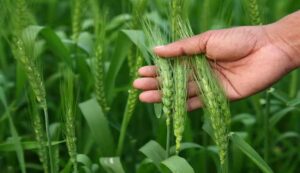Wheat Farming Tips: If the lower leaves of wheat have turned yellow, then follow these tips
Wheat Farming Tips: The latter week of November to December is when wheat is typically seeded in Bihar. However, yellowing of the lower wheat leaves becomes a regular issue when the temperature drops below 5 degrees Celsius. This condition inhibits photosynthesis and has an adverse effect on plant development. This issue is particularly prevalent in areas where stubble burning has reduced the amount of microorganisms in the soil. Dr. Sanjay Kumar Singh, a scientist at Dr. Rajendra Prasad Agricultural University in Pusa, has provided some crucial advice for farmers on how to deal with these issues.

When there is insufficient nitrogen, leaves become yellow.
According to scientist Dr. Sanjay Kumar Singh, plants lack vital nutrients during the colder months because the activities of soil microbes slow down. According to him, cold reduces the amount of nitrogen available. The lower leaves begin to turn yellow as a result of plants moving nitrogen from the bottom to the top portions of the leaves. The plants’ cells are harmed by extreme cold and frost, which turns the leaves yellow. Water accumulation prevents roots from growing and deprives plants of nourishment. Lower leaves may also become yellow due to diseases like leaf blight and yellow fungus.
When the leaves start to turn yellow, spray this.
The scientist advised against letting the wheat field get soggy. The land should be protected from waterlogging by farmers. 20–25 days after seeding, the first irrigation should be carried out, followed by further irrigation as needed. Farmers who have not yet planted should use the appropriate amounts of potash, phosphorus, and nitrogen while planting. Sulfur and zinc should be utilized as well. Apply urea and magnesium sulfate to the leaves if they have been sown and there is a significant yellowing issue.
To lessen the impact of frost, use smoke in the field and water on chilly nights. Farmers may also use organic practices, he noted. whereby trichoderma, vermicompost, and cow dung manure may be used. Use a decomposer to decay the stubble and then incorporate it into the soil rather than burning it. To ensure that the soil has an adequate supply of nitrogen, rotate your wheat and legume crops.

